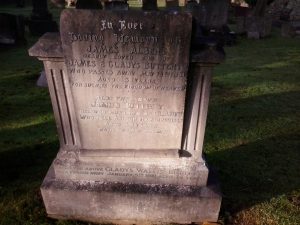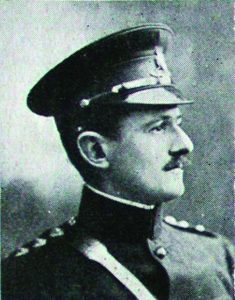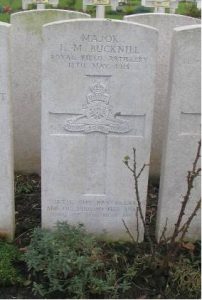36500 or 36560 Pte Gloucester Regt. b 1897 Sheffield. 1911C living at Roslyn Road, Hathersage. (Family records indicate that his family moved to the Bristol area).
Month: October 2016
CARTER, James
Pte 100920 D.L.I., first enlisted 24/6/1916, but not called up until 1/6/1918, probably exempt due to profession? b 1886 Stoney Middleton. 1911C a bootmaker at Stoney Middleton. His father was George Henry Carter b 1846 Highlow.
CAREY, George Glas Sandeman, C B., C M G. Commander, Legion of Honour, Commander of Order of the Crown, Belgium, Military Medal, Belgium
Major in South African War 1900/2. 1911 C Major 106 Field Battery R.F.A based in Hillsborough Barracks, Sheffield. Served throughout WW1 in various campaigns. (DC 27/2/1915; Lt Col. 29 Brigade RFA, mentioned in despatches by Sir John French). By 1917 promoted Colonel. Came to prominence March 1918 “with Carey’s Force “, to block off a dangerous gap in front of the German offensive on the Somme. Major General 1920/22 in the West Indies before retirement in 1922. For full details of his military career and decorations google; ‘Careys Force 1918’. b23/2/1867 London. 1911C listed at Hillsborough Barracks, Sheffield, later his residence was Brookfield Manor, Hathersage. (Among his retinue staying at Brookfield Cottage were (Richard) Peter Dix soldier/ groom and Albert Chapman soldier / servant, see their individual entries below. He died 1948.
CAPRON, John Theodore
ă Lt. R F A 109 Battery. b 1897 Erith Kent and grew up at ‘Westlowe’ Outseats.
The Capron family lived at Greenoak House, Totley from 1899 to 1911. In 1899 his father, Athol Capron, a well-qualified and experienced engineer from Erith in Kent, came to Sheffield with his wife and four children, to take a management job with Davy Brother’s Boilermakers, then an almost bankrupt company. The children were: Maurice aged 9, Dosy (Dorothy Catherine) 7, John T. 3 and Gerard 1 year old. In 1903 their last child, Clare was born at Greenoak House.
When he became Managing Director, he steadily expanded the engineering side, which was fortuitous, because much later when war broke out in 1914, they were able to produce vast amount of presses and shell-making machinery. He was later awarded the OBE for his services during the war and in 1931 was made a Justice of the Peace for the City of Sheffield. He built a large stone house near Hathersage and in 1911 the family left Greenoak and went to live there at Westlowe, at Outseats.
Of the children both John and Gerard went to boarding school in Oxford and then they continued their education at Wellington College.
When war broke out in 1914 John joined the college training corps, and in Sheffield his elder brother Maurice, by then an engineer at Davy Brothers, volunteered for the army. Much to his sorrow he was turned down due to a varicose leg condition..
In November 1915 John, just 19 years of age and in his last year at Wellington, was surprised to learn that he had been granted a commission in the Royal Field Artillery, as a 2/Lt and must report to his Training Brigade with the 49th West Riding Division at Ripon on the 1 January 1916. Training alongside them was the Northumberland Artillery and his future brother-in-law, Frederick Herbert (Bertie) Claudet, (see below) who had already been out to France and wounded whilst serving of the ranks H A C. He was given a Commission on coming out of hospital in Sheffield, where he met and later married John’s sister ‘Dosy’.
During the Somme holocaust of 1916 John was drafted out with other reinforcements to the 56th London TA Division, which had suffered heavy losses in the July attack. He served a year with their Ammunition Column, which involved endless ferrying shells by night convoys of horse and mule-drawn limbers over the dreadful aftermath battlefield of the Somme. In the autumn when the mud got too deep for the wagons the 18 pounder shells were packed into canvas panniers, 4 each side, slung over the animals backs. Each driver lead or more often dragged his reluctant pair, under cover of night, 3 or 4 miles from the “dump” to the gun-site. In September 1917 John was posted to the 109 a regular 18 pounder battery defending the lines at Arras. It was in that beleaguered town near to the station that John was wounded and sent down to hospital at Paris Plage, with shell splinters in the head and right thigh. A month later he was back with the 109 battery. Their worst was on 29 March 1918, when the Germans made their last great attack, bending the 5th army, but not breaking through. They were holding the line in front of Arras, a key point, and were under intermittent barrage for 17 hours. Four of their 6 guns were knocked out and two sergeants and several of the gun crews were killed.
Towards the end, the command of the now depleted battery was shared by John and two other young subalterns, there being no senior officers left. All three were “Mentioned in Despatches” and recommended for decoration. The battery finished up on 11 November 1918, Armistice Day, a few kilometres south of Mons, where in August 1914, they were probably the first 18 pounder guns to open fire in defence of the bridge and the barricades there. John stayed with the battery until he was demobilised by Easter 1919.
John Capron decided that his future lay in farming, so to that end he enrolled at the Shropshire Agricultural College, where he met Ruth Adam, and they were married at Kidderminster in 1922. Unable to raise enough capital to get into farming he returned to the Totley area, where they bought a small stone house at Holmesfield and John became articled to a solicitor in Sheffield. By 1927 John had left Sheffield with Ruth and their daughter Jane, and took a position at an established firm of solicitors in Norfolk. In 1940 when still on Army Reserve, he was recalled to serve on Coastal Defence with naval guns at various positions from the Orkneys south to Lowestoft, until the war was over.
When he retired in 1960, John and Ruth settled in Gillamoor, North Yorkshire, but In 1984 after the death of his wife he moved down to the small town of Kirbymoorside from where, even when over 90 years he was still a prolific writer and constant contributor to ‘The Yorkshire Post’ as ‘John O’Greenoak’.
(Those wishing to know more about the Capron family should see Totley History Group website to whom we are indebted for the above; www.totleyhistorygroup.org.uk reference ‘Greenoak House’).
BUTTERY, James Luther
ß ă Щ 63271 Gnr R F A. Wounded in the arm. (DC 16/12/1916 – Elder son of Mr & Mrs H Buttery, Attercliffe, is in a Manchester hospital). (DC 24/8/1918; ‘returned from leave on Thursday’).
b 1893 Hollow Meadows. 1911C living at Main Road, Hathersage and later of Broom Cottage, The Dale, Hathersage. Prior to joining up he was employed as a plate-layer on Hathersage section of the Midland Railway and lived with his grandparents, Mr & Mrs Buttery in Hathersage. 1919 voters register shows him living at Dale House, Hathersage. Cousin to Percy Luther Skerritt, Lancelot William Hancock Skerritt, Percy and Sydney Skerritt, and Luther Priestley below. He married Gladys Wallis Ibbotson, 1922 in Rotherham.

He died 22/3/1953 His wife died 5/1/1981 age 79. Both are buried in Hathersage graveyard. See photo of their gravestone.
BURKINSHIR, Charles
ß ă Щ 99418 Dvr C/67 Brig. R.F.A. b 1893 Dore. 1911C living at Bank Top, Hathersage, a house painter. Brother in law to John William Darwent b 1886, living same address in 1911. On 1918 Absent Voters list, his address is School Lane, Hathersage.
BUCKNILL, Llewellyn Morris
✟ Major O.C. 105 Battery, 22 Brig R.F.A. 2/Lt 12/5/1900, Capt 1910 & Major 30/10/1914. (DC 27/2/1915; mentioned in Despatches by Sir John French). D of W age 32 on 18/5/1915. Grave; Bethune Town Cemetery. Also remembered together with his brother, John Charles Bucknill, at Hedge End Memorial, Hants.

Son of Lt Col John (late R.E.) & Catherine Bucknill, of Thornfield, Bitterne, Hants. He married Mary Ashton Bucknill, of Bryn Cottage, Cricklade, Wilts, the only daughter of the late Col Ashton John Shuttleworth R F A of Hathersage Hall. They were married at Hathersage Parish Church on 24/9/1913, where his original grave cross is displayed. See article and photo in WHW2W p 28.
BUCKLEY, Walter Ernest
Able Seaman J 31473. b 1898 Aston, Birmingham. 1911C at Handsworth, Birmingham. His mother was Gertrude Florence Darvill, b 1877 Hathersage. 1891C she was living at Chapel Cottage, Hathersage.
BRYANT, Robert Jardine
16952 Pte 7 Bn South Lancs. 40862 Cpl Labour Corps. b 1883 Sheffield. 1911C; living at 5 The Hill, Outseats.
BRUNSDON, Charles, Jnr
ă 49644 Pte Territorial Force Res Bn. 4th Leicester Regt. 42304 12th Norfolk Regt. b 27/6/1899 Hathersage. 1911C living at Padley Wood, with his father Charles who was born Gloucestershire, a plate-layer with the Midland Railway, and mother Julietta (b Hathersage). 1918 Absent Voters address; Nether Padley. His father possibly could be the brother of William Brunsdon, b 1864 North Carney, Gloucestershire, a carter 1891C living at Hungry Lane, Hathersage?
